By Christopher Miskimon
The 68 men of the Corps of Guides at the British Residency in Kabul all perished on September 3, 1879, but they died a magnificent death. They had arrived less than two months earlier, escorting Major Louis Cavagnari, the newly appointed British Regent to the Emirate of Afghanistan. It was part of an arrangement with the Afghan government. The city was quiet for a few weeks, but in September the situation suddenly turned in the course of a day.
Several Afghan regiments arrived in the city during a routine transfer. They had not been paid in months and were contemptuous of the units they were replacing, which had recently been defeated by the British. On the morning of September 3, they were given a small portion of their back pay, but this only seemed to incense them. They decided to get the balance from the British Residency and went there to loot it, only to be driven off by the sentries. The Afghan troops retrieved their weapons and returned at the head of a mob.
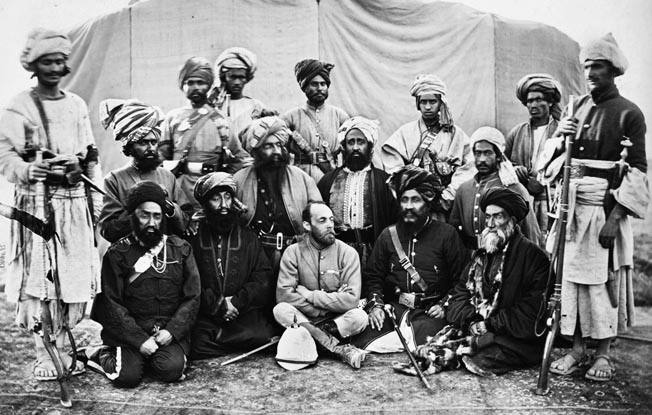
The Residency had no walls for protection, and high ground overlooked it from several directions. The troops, backed by the mob, besieged the Residency. The Guides repelled several attacks, but the Afghans deployed an artillery piece and began blowing the Residency apart. The Indian and Sikh troops made several counterattacks of their own, which frustrated Afghan attempts to end the fight. Offers to allow the Muslim men among the Guides to live were ignored. The Guides were a cohesive group, and the men would not abandon each another.
As evening arrived, the buildings were burning and only a few Guides were left unwounded. A Sikh junior officer named Jewand Singh led them on a final charge straight into the attacking mob. Cavagnari was killed early in the attack, but the honorable Guides fought to the last man. Seven other Guides were away from the Residency on other duties. They were the only members of the detachment remaining. The Afghans lost 600 men.
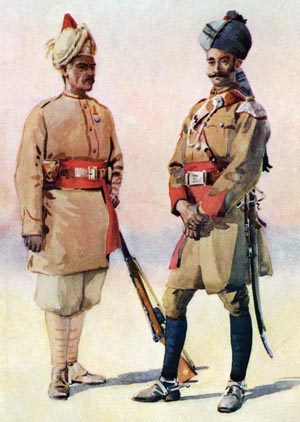
Competition between Russia and the United Kingdom combined with internal Afghan politics to drive the country back into war in the late 1870s. The British could not bear the idea of Russia controlling territory bordering colonial India. England issued a warning to the Afghans that anyone cooperating with the Russians would be considered to have committed an intolerable act. But when Russia attempted to gain influence with Afghan Emir Sher Ali Khan, the Afghan ruler snubbed the British in favor of the Russians.
Sher Ali subsequently had issued orders to his army in September 1878 to turn away Cavagnari on his initial attempt to enter the country to conduct counter negotiations. Robert Bulwer-Lytton, the British Viceroy of India, had written Sher Ali requesting safe passage into Afghanistan for Cavagnari, but his request had gone unanswered. Nevertheless, the delegation proceeded. Cavagnari was escorted by General Sir Neville Chamberlain and 250 Guides. But an Afghan outpost at the eastern entrance to the Khyber Pass refused them entry when they arrived. This was the spark that ignited the Second Anglo-Afghan War.
The war began in November 1878 when Maj. Gen. Frederick Roberts led 35,000 Anglo-Indian troops into Afghanistan. Roberts defeated an Afghan army at Peiwar Kotal on December 2, 1878. Sher Ali requested Russian troops to counter the invasion, but the Russians refused to conduct a winter campaign. Sher Ali decided to go in person to St. Petersburg to confer with Tsar Alexander II. Leaving his son Yakub Khan in charge as regent, he rode to the border. But much to his dismay the Russians refused him entry. Discarded by Russia and Great Britain alike, he died a broken man in Mazar-e Sharif in February 1879.
Yakub Khan was more amenable to the British. For a payment of 60,000 pounds sterling to Afghanistan in May he agreed to allow the British to install a resident with extensive powers. The post was given to Cavagnari, who had served in key political posts in Punjab and Peshawar.
After the massacre at the Residency in Kabul in September fighting broke out once again. For a time the campaign went well for the British. Roberts won another victory when he defeated the Afghan army of Nek Mohammed Khan on October 6, 1879, at Charasiab and then occupied Kabul. The British promptly executed the leaders of the attack on the Residency. Yakub proclaimed himself a friend to the British while secretly he remained in communication with those who opposed them. For the winter, Roberts’ army stayed in Kabul where it occupied an old fort named Sherpur, strengthening it with barbed wire and abattis, a field fortification made of sharpened wooden branches. Meanwhile, thousands of hostile Afghans gathered in the city and prepared to attack.
Once assembled, the Afghan troops attacked Roberts’ force shortly before dawn on December 23, 1879. The night skies were still black and the Afghans hoped to rush the fort under the cover of darkness in the hope of preventing an effective response. The British were ready, though. Roberts’ army had several batteries of mountain artillery equipped with a new invention: the star shell. As these new rounds burst overhead, the snowy battlefield was revealed in an eerie light that exposed the charging Afghans. The British infantry, though thinly spread across the 41/2-mile perimeter, poured volley after volley of accurate rifle fire into the enemy ranks. Despite their losses the Afghans continued their assault until 10 amat which point they broke and fell back. Another attack an hour later was beaten off with artillery fire, and by late evening the battle was over. The Afghans were in the process of making an orderly withdrawal when a British cavalry charge scattered them. Roberts lost three killed and 30 wounded in contrast to 3,000 Afghan casualties.
Afghanistan was still in chaos, but a new ruler came to the fore. The British chose Abdur Rahman as a reasonable compromise to take the throne. The appointment met the approval of many Afghans given that Rahman was the grandson of Dost Mohammad Khan, Afghanistan’s ruler during the First Anglo-Afghan War of 1839-1842. This did not produce peace since Ayub Khan, another of Sher Ali’s sons and the governor of Herat Province, wanted the throne for his own. Ayub gathered thousands of troops and in June 1880 marched toward Kabul via Kandahar, determined to unseat Abdur and seize the crown. This started the fateful march to the Battle of Maiwand.
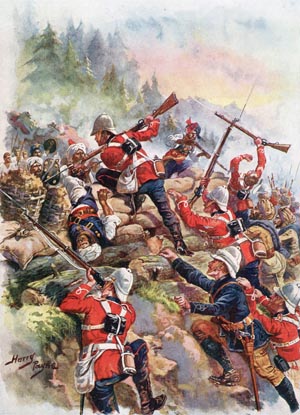
A division of British troops, composed of two infantry brigades and one cavalry brigade, was posted at Kandahar under the command of Lt. Gen. J.M. Primrose. There were also 6,000 friendly Afghan troops under the command of Abdur Rahman’s local governor, also named Sher Ali. These troops were equipped by the British. When he heard Ayub Khan was about to march out from Herat, Sher Ali decided to take his troops to set up a blocking position about 80 miles northwest of Kandahar. His troops entrenched at Girishk on the Helmand River. Sher Ali hoped this display would impress the local tribes and prevent them from joining Ayub Khan. The locals were instead angered by Sher Ali’s presence because he was seen as a British lapdog. Even his own troops showed open contempt for him.
Concerned about his army’s ability and the lingering anger, Sher Ali sent a request to the British for support. While it was acknowledged that Sher Ali and his troops were in a bad position and there was considerable risk, the English leadership felt they could not leave Sher Ali alone without seriously damaging their own reputation among the Afghans. Primrose was ordered to take one brigade of infantry and one of cavalry and go to Sher Ali’s support.
The British forces that marched to Girishk were a mix of English and native troops from nearby India. This was normal for the period, as memories of the Indian Mutiny of 1857 were still strong. Most large units had British troops to back up and perhaps monitor the locally raised soldiers. The infantry brigade was commanded by Brig. Gen. George Burrows and had three regiments. Lt. Col. James Galbraith’s 66th Regiment of Foot, later known as the Royal Berkshires, was composed of Englishmen equipped with the Martini-Henry single-shot rifle. This unit was short two companies, though, which had been detached for duty elsewhere.
The Indian regiments were the 1st Bombay Native Infantry (Grenadiers) and the 30th Bombay Native Infantry (Jacob’s Rifles). The Grenadiers were considered a steady, senior unit that had seen service in Aden while Jacob’s Rifles had not seen recent active service and carried a large number of untrained recruits in its ranks. Both units carried the Snider-Enfield .577-caliber rifle. This was a breechloading conversion of the Model 1853 Enfield muzzle-loader. A trained soldier could fire 10 rounds per minute.
The cavalry brigade consisted of a pair of horse regiments and accompanying artillery. The 3rd (Queen’s Own) Bombay Light Cavalry and the 3rd Sind Horse were veteran units that performed well during the campaign. E Battery of B Brigade (E/B), Royal Horse Artillery was a former unit of the East India Company that was drawn into the British Army after the Mutiny. It was equipped with six 9-pounder, muzzle-loading cannons. Brig. Gen. Thomas Nuttall commanded the brigade.
Both officers were older men in their mid-50s. Neither of them had seen combat service in years but both were veterans of the Indian Mutiny. As for Nuttall, he also had served in Abyssinia in 1867. Additionally, Burrows had half of a company of the Bombay Sappers and Miners. He was in overall command of the brigade, whose total strength was about 2,565 men. There were also an unknown number of civilians employed as drivers and other camp followers behind the formation as it marched to Girishk.
The British column reached the Helmand River on July 1. Ayub Khan’s army was nearby and the threat of battle was impending. Tragically, Sher Ali’s troops were upset by this rather than emboldened. Ali and Burrows decided to march the Afghan troops back over the river where they could be disarmed before they deserted. The feared mutiny occurred before they could enact this plan. All the troops except the cavalry fled over to Ayub Khan. As they marched to their former enemy’s camp, the British pursued them.
In a short but sharp action, the fleeing Afghans were forced to abandon their artillery; however, fleeing Afghan gunners managed to make off with the horses for both the guns and ammunition wagons. They even cut up the harnesses to make it more difficult to move them. Burrows decided to move the guns with some of E/B Battery’s horses and burn the ammunition wagons. He kept 52 rounds per gun and dumped the rest of the ammunition in the river to deny its recapture. This choice was the subject of much criticism later, given that there were 50 captured camels that could have carried the ammunition. Still, the captured artillery was used to form a smoothbore battery, stripping a number of officers and men from E/B Battery to provide steady leadership and expertise. Captain J.R. Slade took command of the unit with three lieutenants to assist him. The rest of the gun crews were filled out with 42 men from the 66th Regiment.
At that time of year the Helmand River was characteristically shallow. This meant that there were many fords available. The region was stripped of supplies, which made it untenable for the British to hold, particularly with the loss of Sher Ali’s army. Burrows decided to fall back to the Khusk-i-Nakhud River, which was directly on the route to Kandahar. The local tribes saw this movement as a retreat, coupled with the recent desertion of the Afghan troops. This encouraged large numbers of the tribe’s warriors to join Ayub Khan’s army, which was rapidly closing up on the British.
The British had solid intelligence regarding the strength of Ayub’s army. He had 25,000 men, of which 10,000 were regular infantry and cavalry and the remainder Afghan tribesmen. The army was equipped with three dozen guns, including three powerful Armstrong breechloaders that outshined any guns in the British force.
At that point, Burrows received instructions from the British High Command for Afghanistan, which had been forwarded to him by Primrose in Kandahar. “You will understand that you have full liberty to attack Ayub, if you consider you are strong enough to do so,” stated the orders. “[The government considers it] of the greatest political importance that his force should be dispersed, and prevented by all possible means from passing on to Ghazni.” The town of Ghazni was situated between Kabul and Kandahar.
Burrows considered the wording to mean that he should attack. This was also a tradition of the British Army. It always attacked, and it usually won. The opinion also existed that Afghans were less dangerous when defending.
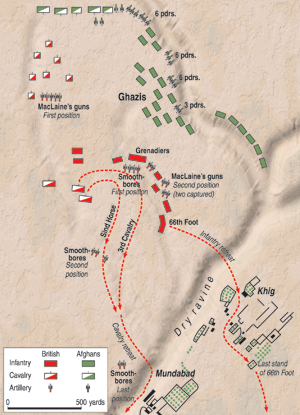
On July 23 the cavalry screens of both armies were in contact. The British realized they were outnumbered and Ayub Khan’s army was marching to Maiwand, which put it on a course for Kandahar. This also put the Afghan force closer to that city than the British, so Burrows realized he had to march after his opponent. Unfortunately, he did not order the movement for several days. The camp was not packed up until the night of July 26, leaving a tired army to march out on the morning of July 27. The British cavalry formed the advance guard supported by four cannons from the E/B Battery. The main body marched in parallel columns. From left to right were the Grenadiers, Sappers and Miners, Smoothbore Battery, Jacob’s Rifles, 66th Regiment, and the baggage train. Trailing the formation was a squadron of the Sind Horse and the rest of E/B Battery’s guns.
By mid-morning the British were at the village of Mundabad on the east side of a dry ravine that ranged up to 100 feet wide and 25 feet deep. As the infantry passed through the village the cavalry screen crossed the ravine and began searching the desert beyond. Soon dust clouds were spotted off to the north from west to east. The scout soon made out columns of Afghan troops marching into Maiwand. Afghan cavalry soon appeared and spotted their British counterparts. The two armies had located each other and now an engagement was beginning. Burrows formed a plan to defend along the ravine and village and force his enemy to cross the desert plain to engage him. This would allow the British to wear down the more numerous Afghans. Ayub Khan was more intent on continuing to Kandahar after defeating the small British force shadowing his flank. It was not an ideal situation for either side, but the battle had begun and it was too late to change positions.
The artillery went into action first. Major G.F. Blackwood’s E/B Battery unlimbered with the cavalry in support. Lieutenant N.P. Fowell’s division set up on the right about 500 yards from the ravine. His men opened fire at 10:50 am. Lieutenant H. MacLaine’s division went to the left but continued on until it was a mile from the ravine and then opened fire. While these two divisions started firing on the distant Afghans, Blackwood called up his third division from the rear. Commanded by Lieutenant E.G. Osborne, these guns were consolidated with the rest to form a new, stronger position 2,000 yards from the ravine and an equal distance from the approaching Afghans.
With the artillery in position, the infantry was gradually brought up and placed into line using the artillery as an anchor. The 66th and Jacob’s Rifles were on the right of E/B Battery while the Grenadiers formed on the left. The Sappers and Miners dug in immediately behind the guns to act as protection for them. The Smoothbore Battery deployed on the Grenadiers’ left facing to the north. The cavalry pulled in behind the left flank of the formation.
The day was almost unbearably hot as the Afghan army advanced. The temperature soared to 120 degrees Fahrenheit and the approaching army was obscured in a shimmering haze rising from the desert floor. Although it was a plain, the ground was not entirely level and parts of the Afghan force would disappear into low spots only to reappear minutes later. As they grew closer Burrows could see the enemy formation was long enough to flank his force on both sides. Burrows still had time to pull back to the ravine and village, but he did not issue the order and at 12 pmthe British were still out in the open expanse of the plain. This was a glaring error in judgment that would cost the British dearly.
The British batteries went into action, sending their shells crashing into the enemy’s ranks. The Afghans soon responded with 30 of their own guns. This was all they had since Ayub had decided to leave behind six of his guns during the march. Ayub deployed his guns in an arc so that they could bombard every part of the British position. The Afghans skillfully used cover offered by the landscape to move their guns closer to the enemy. Neither side’s fire was having much effect, though. The gunners had difficulty getting the proper range given the haze from the heat. Both sides’ rounds generally landed beyond their targets. This did have an effect on the ammunition wagons and regimental water carriers behind the British formation as the errant shells often landed among them. Afghan shells set several British ammunition wagons on fire. The bombardment of the British rear also frightened water carriers from bringing badly needed water forward to the troops on the front line.
The distance between the two armies gradually closed until they were within rifle range of one another. The 66th Regiment was the first British infantry formation to open fire. Galbraith waited until the approaching Afghans were close enough for the rifles to be effective. The first volleys felled only a few warriors, called ghazis, but the majority of the rounds fell in front of the formation, kicking up spurts of dust. Galbraith knew this was where their fire would have most effect and told his company commanders to take over.
The 66th Regiment was deployed in a shallow, dry wadi that offered a small measure of cover against incoming fire. The unit was firing its volleys from its Martini-Henry rifles using a new technique in which the line maintained a continuous stream of fire from the right end to the left end with each man firing immediately after the man to his right. After a soldier fired his round, he would immediately reload his rifle, working the breech lever to open the chamber and eject the empty cartridge case before reaching into his ammunition pouch for another round to insert into the chamber. Closing the breech lever would make the rifle ready to fire, the entire process taking just a few seconds. A trained infantryman could fire 12 rounds a minute without difficulty. Thousands of bullets per minute flew across the distance between the two armies. The rounds caused ghastly wounds that were often fatal.
The carnage the British fire inflicted did not stop the Afghans. They continued attacking, taking little heed of the casualties they were receiving from the daunting fire of the British. When a flag carrier fell, someone else picked up the flag and carried it forward. The attacking troops began to flank the 66th Regiment to its right, so Galbraith pivoted his right side company to face them. One of Burrows’ staff officers suggested sending some guns from the Smoothbore Battery to support them and he agreed, sending a pair of cannons to the endangered flank. These adjustments were enough to temporarily stem the enemy tide. As the Afghans surged forward to overwhelm the British flank, many were mowed down by rifle fire or from the iron balls from case shot. The fearsome fire caused the Afghan attack to falter. Many of the retreating Afghans followed the line of the ravine back toward Mundabad, hoping to capture the vulnerable baggage train. In return the Afghan guns began firing on the 66th Regiment. It was not an accurate fire and Galbraith ordered the regiment to lie down in the wadi to further soften the effects of the enemy cannons.
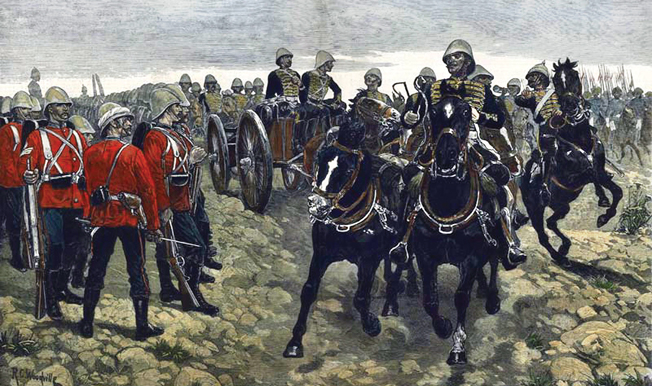
Ayub now transferred his attention to the British left flank, sending his Herati irregular troops and cavalry to attack. Seeing the movement, Burrows ordered two companies of the Grenadiers to wheel left to face the new threat. He also ordered two companies of Jacob’s Rifles under Lieutenant Duncan Cole moved to the left of the Grenadiers to bolster the line alongside two more guns of the Smoothbore Battery. Meanwhile, Nuttall’s cavalry, guarding the rear of the British position, was being outflanked by the Afghan horsemen. The British lacked the numbers to mount an effective charge, so they relied on their carbines to keep the Afghans back.
While the two cavalry forces hotly skirmished at 12:30 pm, the British baggage train now had enemy groups on two sides. “Shells and round shot came up to the baggage,” wrote Major J.T. Ready of the 66th Regiment. “The ghazis and the cavalry pressed on the right. Colonel Malcolmson told me to retire the baggage. I found Bray and a few men hotly engaged with men behind walls, high ones, and shooting cavalry and others trying to work round towards our rear. Our cover was not good, the walls running mostly towards the enemy. However, we held on for a long time.”
The British army was in a difficult position. It was surrounded on three sides and heavily outnumbered. Its tenuous line of retreat was held open only by the baggage guard. The Afghan guns were still moving forward, making their fire gradually more accurate while the foot soldiers were closer as well. In response the men of E/B and the Smoothbore Batteries continued their fire. They thought they knocked out one gun and forced an enemy battery to withdraw but could not be sure in the haze caused by the extreme heat.
Burrows realized the predicament he had placed his command in and ordered the Grenadiers to advance 500 yards and shatter the Afghan formation. It was the only thing they could do to save the situation, and past experience had shown that such offensive action could turn the tide. The regiment went about 100 yards before the Afghans realized what was happening and focused their artillery on them. Dozens of shells crashed down around the Grenadiers, but few caused any casualties. The sight of the barrage concerned Burrows, though, who halted the advance.
In the meantime, the Afghan regiments completed their own preparations and began their own advance. The Herati regiments were facing the Grenadiers while the Kabuli regiments and some tribesmen faced Jacob’s Rifles. The two Indian regiments raised their Snider-Enfields to their shoulders and opened fire at 800 yards, supported by the British artillery. Once again lead flew downrange to tear into the enemy ranks. The Heratis took heavy casualties and appeared on the verge of breaking but then rallied and came on again. The Grenadiers kept up their fire, volley after volley, smoke and flame belching forth from the muzzles of their rifles. It eventually proved too much, and the Heratis turned and retreated, leaving the bodies of the dead strewn across the field. Jacob’s Rifles also succeeded in repulsing the Kabulis, though instead of fleeing the ghazis lay down and sniped at the Indian troops.
The Afghans continued moving around the British left flank, causing Burrows some concern. The Smoothbore Battery was out of ammunition so it was ordered back to Mundabad to resupply. Slade stayed behind to replace the wounded Blackwood as commander of E/B Battery. The sight of the artillery leaving unsettled the two companies of Jacob’s Rifles that held the extreme left flank. It also encouraged the Afghans, who advanced again using the small folds in the terrain to mask their movements. By 2 pmthey had advanced their infantry to within 600 yards of the British. The Afghans advanced 10 guns to support them, which kept up a steady fire on the British.
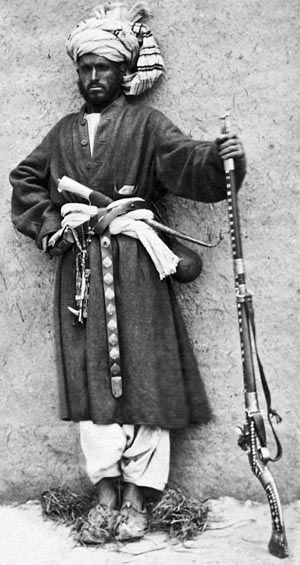
The effect on the British was apparent as casualties rose significantly. The Grenadiers had lost a third of their numbers, but they were still holding on even though the British believed that Indian units would not hold up under such high losses. Jacob’s Rifles had lost a fifth of its men. In addition, Lieutenant Cole, who commanded the left flank companies, was killed by an enemy cannonball. The artillery batteries had suffered 25 percent casualties in men and more than 50 percent of their horses; the cavalry was suffering heavy losses as well. Only the 66th Regiment, having cover in its shallow wadi, was still mostly intact. All the men were suffering from the heat and many were without water.
At 2:30 pmthe Afghan fire slackened and then quit, causing some among the British to hope the enemy ammunition was gone. They quickly realized it was just a lull. Ayub was preparing his army for a major assault. The entire force charged forward and the British replied with renewed volleys and the booming of E/B Battery’s guns. They killed hundreds of the charging Afghans within minutes. It seemed as if the attack was going to falter, but suddenly the situation took a turn for the worse.
The two companies of Jacob’s Rifles on the extreme British left, untrained and with only a single junior officer leading them, were overwhelmed by an attack that hit them on both their left and front. It was too much for them to bear and they broke, fleeing to their right into the rear ranks of the Grenadiers. Seeing their chance, the Afghans renewed their charge, many of them pursuing the fleeing troops of Jacob’s Rifles. The Grenadiers saw the impending disaster and tried to form a square, but the charging Afghans kept them from closing the formation. As a result, the formation became filled with fleeing Indians and attacking warriors.
With the Afghans threatening to roll up the British line from the left, Slade ordered the guns farthest to the front withdrawn. Unfortunately, MacLaine waited to withdraw his guns, although it is unknown whether he tried to fire one round too many or if he simply had not heard the order to retreat. Afghan warriors overran his cannons in a chaotic clash of swords, knives, and ramrods. Almost all the artillerymen were cut down. MacLaine managed to get one gun team out when Sergeant Patrick Mullane charged his team of horses through a mob of Afghans and snatched a wounded driver from their grasp. Mullane received the Victoria Cross for his bravery. The gun division on the right also was nearly overrun, but one of its officers was saved by Lieutenant Osborne, who cut down several of his attackers. Osborne was killed after he dismounted to help some men hook up a gun to its limber.
As the gunners rode off, the Sappers and Miners fired three volleys to cover themselves and then fell back. Slade went 400 yards and stopped to resume firing, but almost immediately realized the battle had turned against the British and pulled his guns and those of the Smoothbore Battery back across the ravine to Mundabad where they set up to cover the retreat of the infantry and cavalry.
Burrows ordered Nuttall’s cavalry to charge, hoping to relieve the infantry. It was challenging for them to disengage from their front, but they made the charge even though it was weakened when Nuttall himself rode off to the right. Some of his horsemen followed him while others stayed their course and crashed into the Afghans attacking the rear of the Grenadiers’ formation, giving them time to regroup. This last effort was all the cavalry could manage, though, and it rode back to Mundabad afterward.
The Grenadiers were split into two groups, one of which joined the Sappers and Miners. It is not certain what happened to the other group, but later investigation suggested that parts of three companies formed a square and held off their attackers for a long while. It is known that the Afghan right wing was occupied and did not advance toward Mundabad until later. In addition, the bodies of 70 Grenadiers were later found about halfway between the ravine and their first position. Their exact fate is lost to history, though.
Burrows directed his retreating troops toward Mundabad, but many were panicked and a large group ran into the wadi occupied by the 66th Regiment. The frightened men forced many of the regiment’s troops out of the wadi and into full sight of the Afghans. This actually had a positive effect for the sudden appearance of so many British soldiers caused the nearby Afghans to think a counterattack was occurring and they promptly fled.
At that point, Galbraith began marching his men out, though the wadi blocked them from going directly to Mundabad. Their roundabout course actually led them toward a neighboring village named Khig. It was a difficult movement. The men were badly affected by the heat and the panicked troops were mixed in among them. But they continued on, firing to both front and rear while Afghans sniped at them. By the time the regiment reached the main ravine 80 men were lost, including two company commanders.
The ravine was 20 feet deep in this area and the 66th Regiment became disordered getting across it as the men had to climb down one side and up the other. Once on the other side, some of them found some of the officers’ baggage, which had been abandoned by civilian drivers who fled when they saw the tide of battle turning.
Galbraith rallied his men by uncasing the regimental colors, a beacon that drew many of his soldiers directly to him. Soon 200 men from various units took up positions around the flag. They were not in a good position, though, and the Afghans bore down on them. The Afghans killed Galbraith and Barr, who fell across the broken staff of the colors. The rest maintained a steady fire and moved slowly into Khig until they reached a mud wall surrounding a garden. It was there that 130 survivors made their final stand. They fought bravely but soon the Afghans brought up some artillery and pounded the position. Blackwood, the wounded E/B Battery commander, died there, too, along with a number of other officers.
“Men! What shall we do to save this?” cried a lieutenant named Henn, who held the colors aloft over his head. He soon fell, too. Someone continued to pick up the fallen colors until all were slain by screaming Afghans who charged the position, eventually capturing the colors. When there were only 11 men left, a pair of lieutenants and nine others, they resolved that it was impossible to recover the colors, and so they decided to fight their way toward Mundabad. They had gone only 300 yards when Afghan cavalry surrounded them. The remaining men formed up back to back and fired steadily at their attackers until all of them were dead. Weeks later dead horses were still lying in a ring around the spot where these men perished. They would be memorialized as the “Last Eleven.”
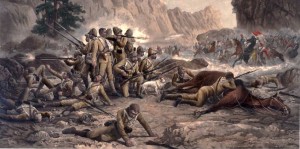
Even the Afghans praised the 66th Regiment’s final stand. “These men charged out of the garden and died with their faces to the foe, fighting to the death,” said one of Ayub Khan’s officers “The conduct of these men was the admiration of all who witnessed it.”
The rest of the British force was probably saved by the Afghan army’s desire to loot the abandoned baggage. This allowed Burrows’ survivors to begin falling back to Kandahar. The companies that formed the baggage guard and the artillery maintained their cohesion and fought a rearguard action whenever any Afghans paused in their looting to pursue. It was a sorry sight. Wounded men were carried by animals or on wagons and caissons while thirsty men staggered alongside, the column six miles long. Five guns were abandoned as horses gave out. After nightfall the retreating troops reached the village of Hauz-i-Madat. It had a small well, which afforded the wounded an opportunity to quench their unremitting thirst. MacLaine was captured and beaten by the villagers. They turned him over to the Afghan army. Although initially treated well, he was murdered in September in the aftermath of an Afghan defeat.
At dawn the column continued on. They endured harassing fire from Afghan cavalrymen who were shadowing the column. Gunner Edward Collis grabbed a rifle and took cover in a nullah where he fired on the horsemen and drove them off. Collis earlier had helped save the guns. He was awarded the Victoria Cross for his valor. But many years later the medal was rescinded when he was convicted in England of bigamy and child molestation. After a harrowing march, the column reached the Argandab River in later morning and the men drank their fill. This raised morale and improved discipline considerably.
A few cavalrymen sent forward reached Kandahar, bringing news of the disaster. General Primrose sent a relief column that found Burrows’ troops and escorted them. By mid-afternoon the rear guard had reached Kandahar after 33 hours of marching. It had lost 969 killed and only 177 of the wounded survived through the retreat. Ayub Khan lost 3,000 men. Many of his troops left to take their comrades’ bodies home. The Afghans would be defeated outside Kandahar in September, ending the war as Abdur Rahman took the throne.
Both Burrows and Nuttall remained in the army. Their careers did not materially suffer as each would be promoted. Slade was made a Companion of the Bath and eventually rose to become commander in chief of Egypt. The loss of the 66th Regiment’s colors was taken as final proof that the treasured objects were no longer appropriate for the modern battlefield and henceforth they would be stored when regiments went on campaign. The Afghans kept them for at least 12 more years, but eventually they also were lost to history.
Yet there was one survivor of the final exchange. Bobbie, a white dog with brown ears, was a regimental mascot. He stayed with the Last Eleven until they had all fallen. He may have fought the Afghans, too, for they had slashed him with a sword and left him for dead. When the ghazis departed to loot the baggage trains, Bobbie went off to find his regiment. He found them and survived to return to England in 1881. Sadly, he died a year later when he was run over by a taxi. He was stuffed and can still be seen in the regimental museum in Salisbury with his Afghan War Medal, which Queen Victoria personally awarded to him.
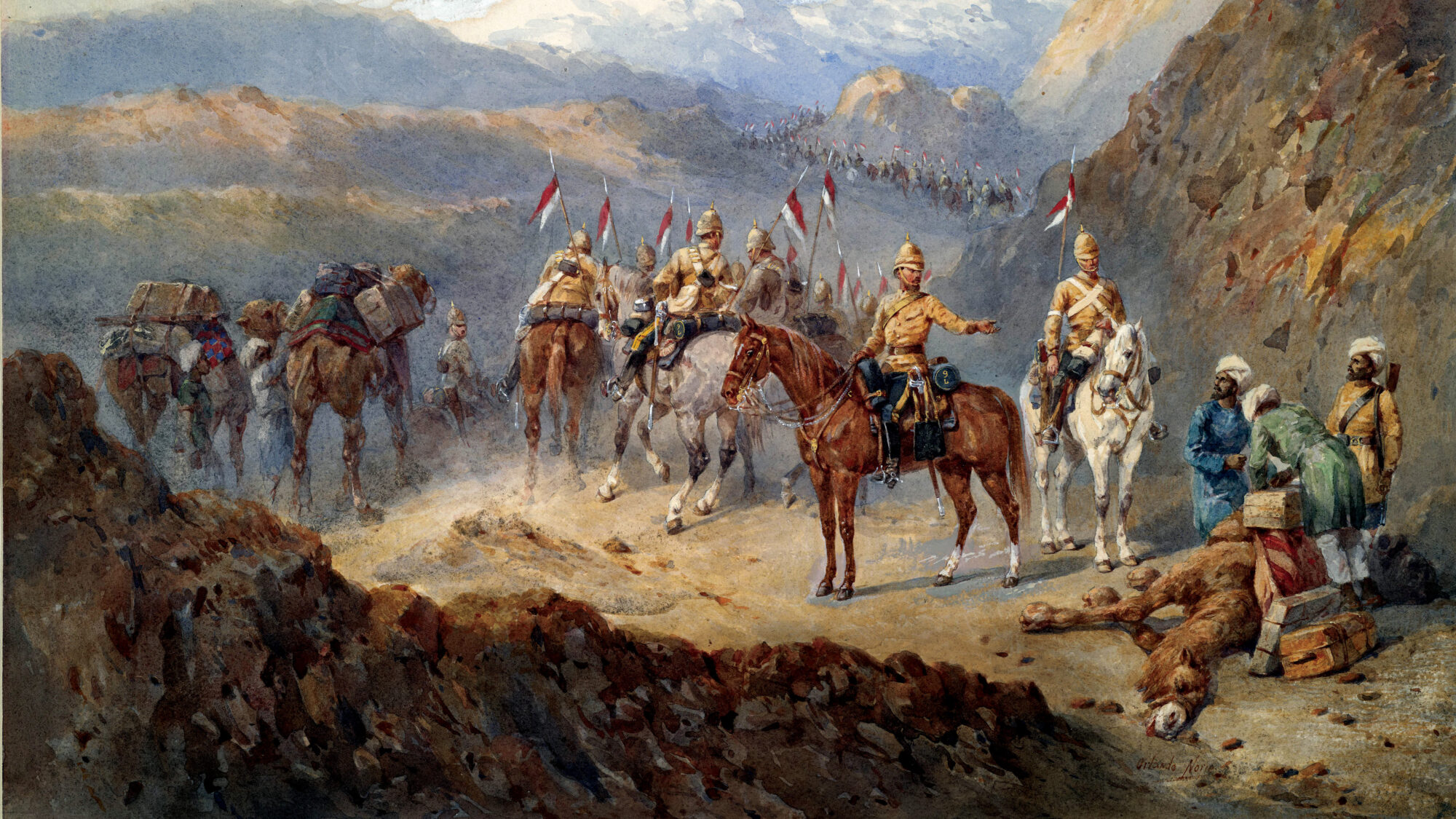
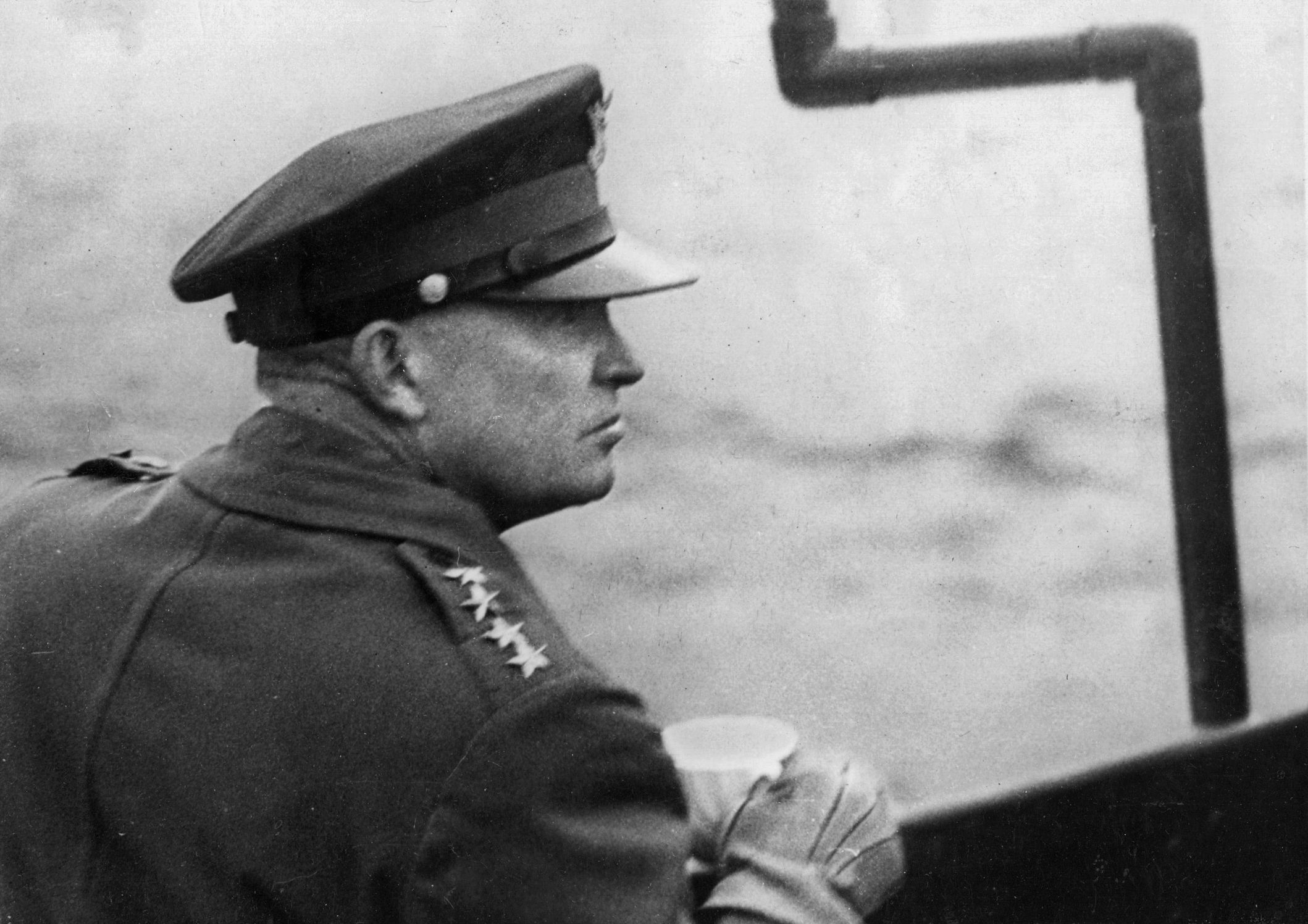
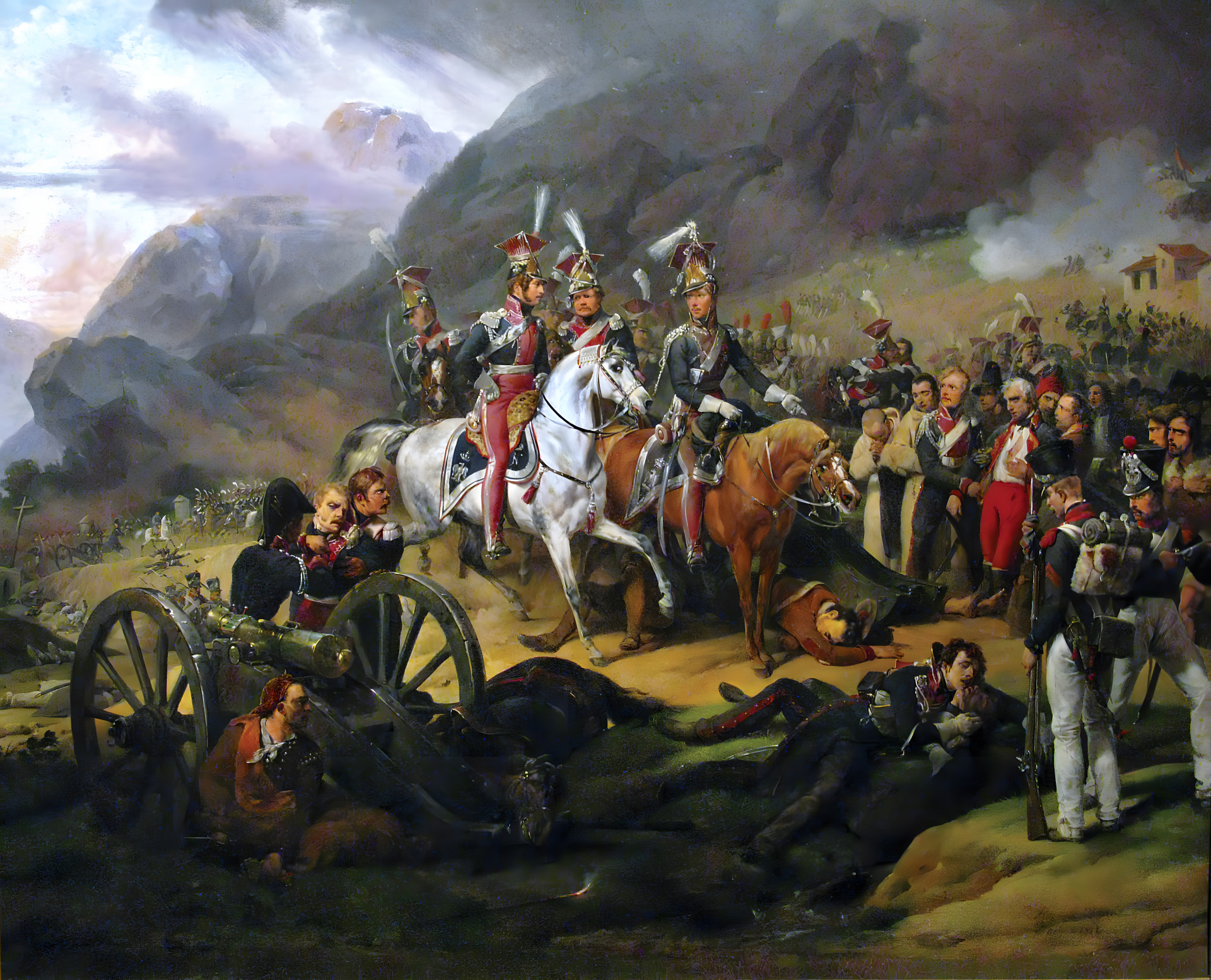
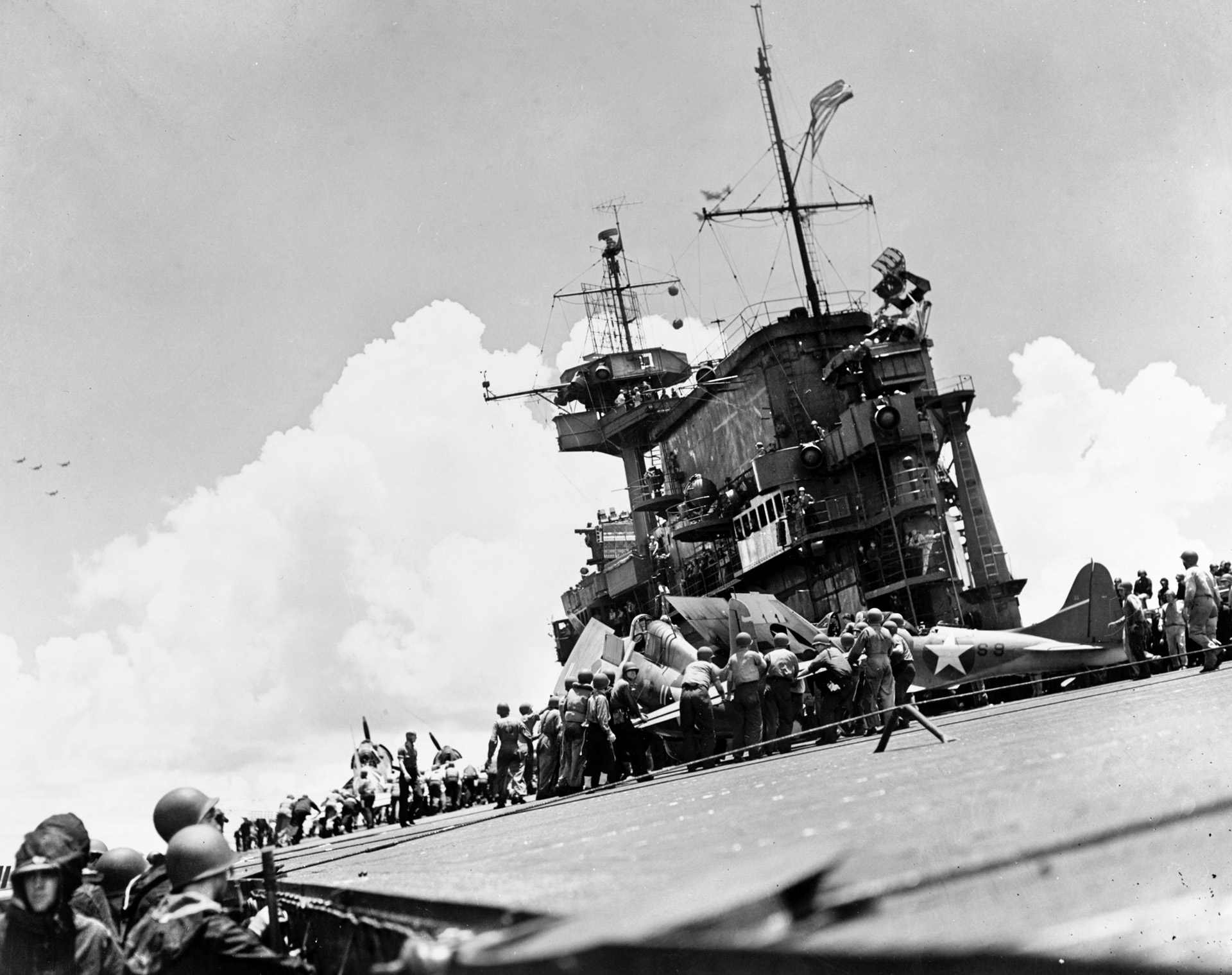
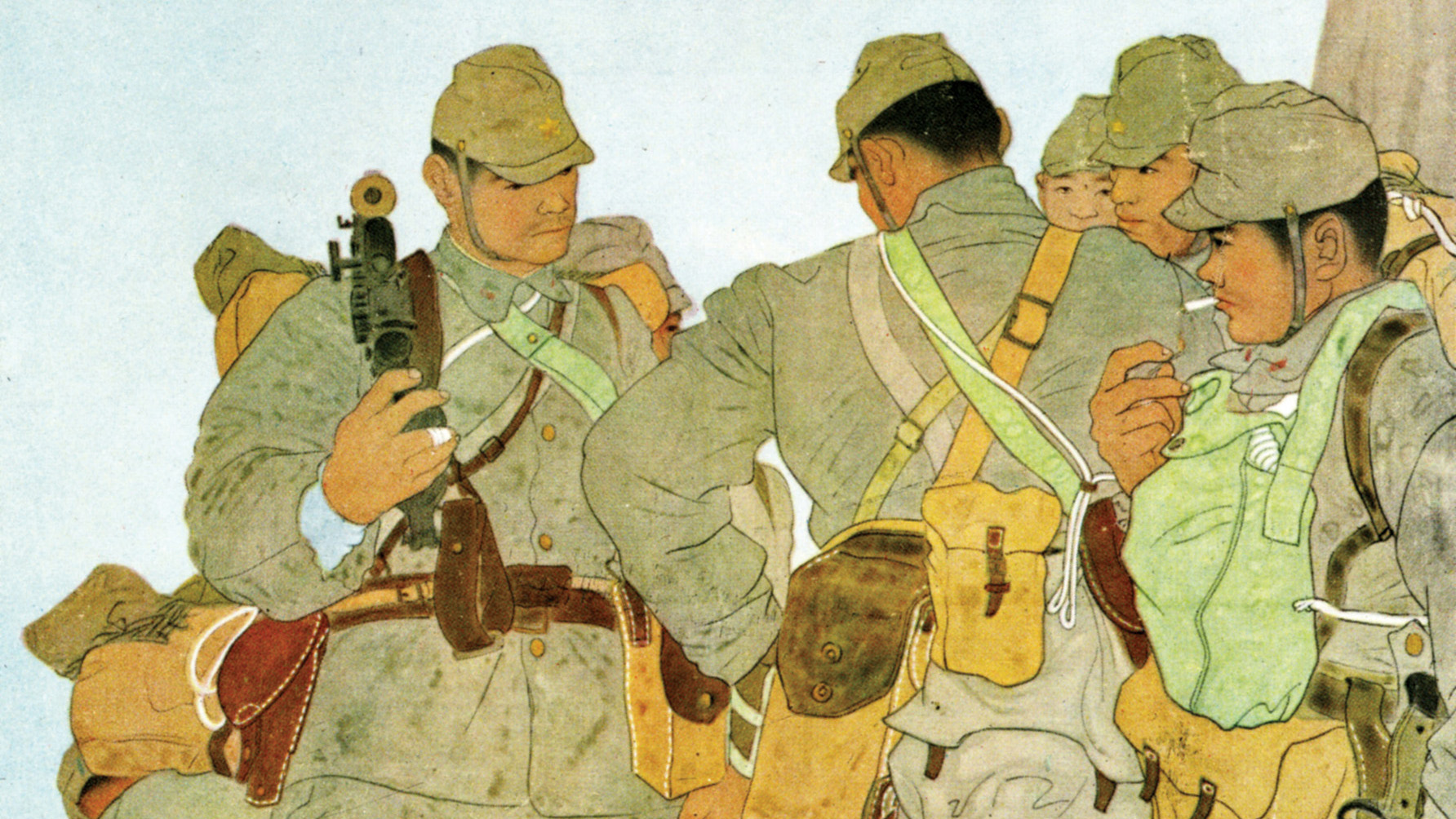
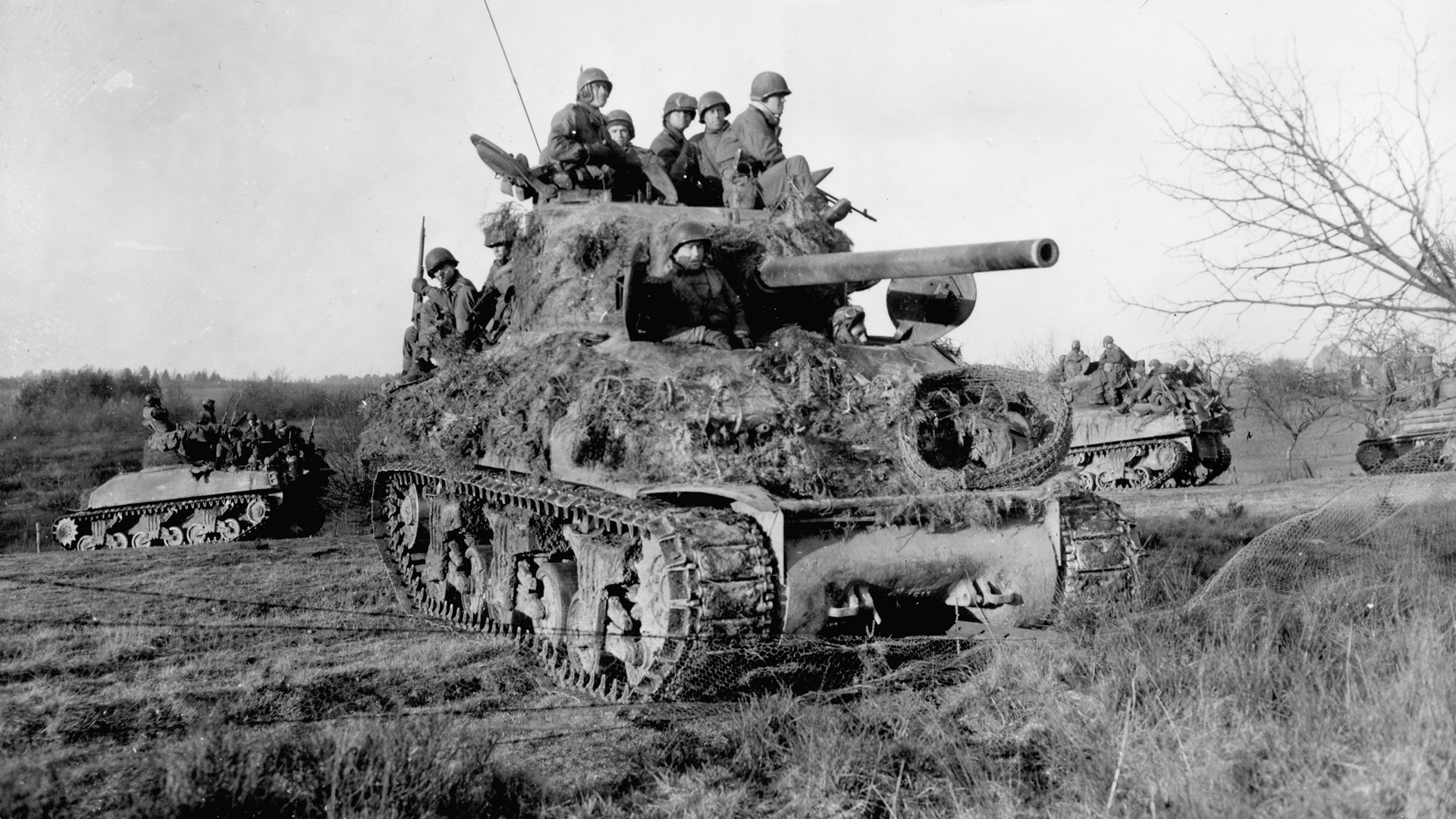
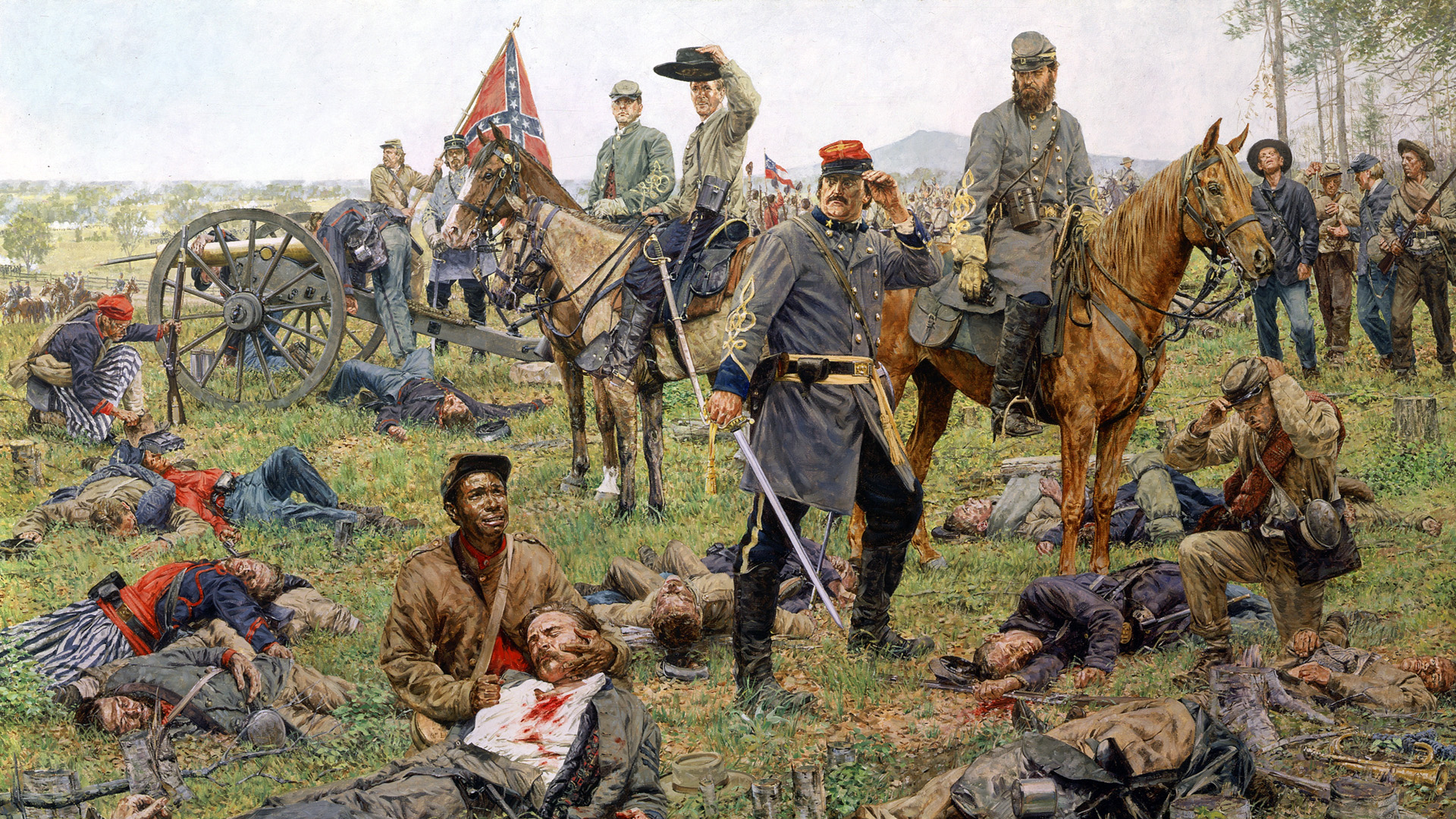
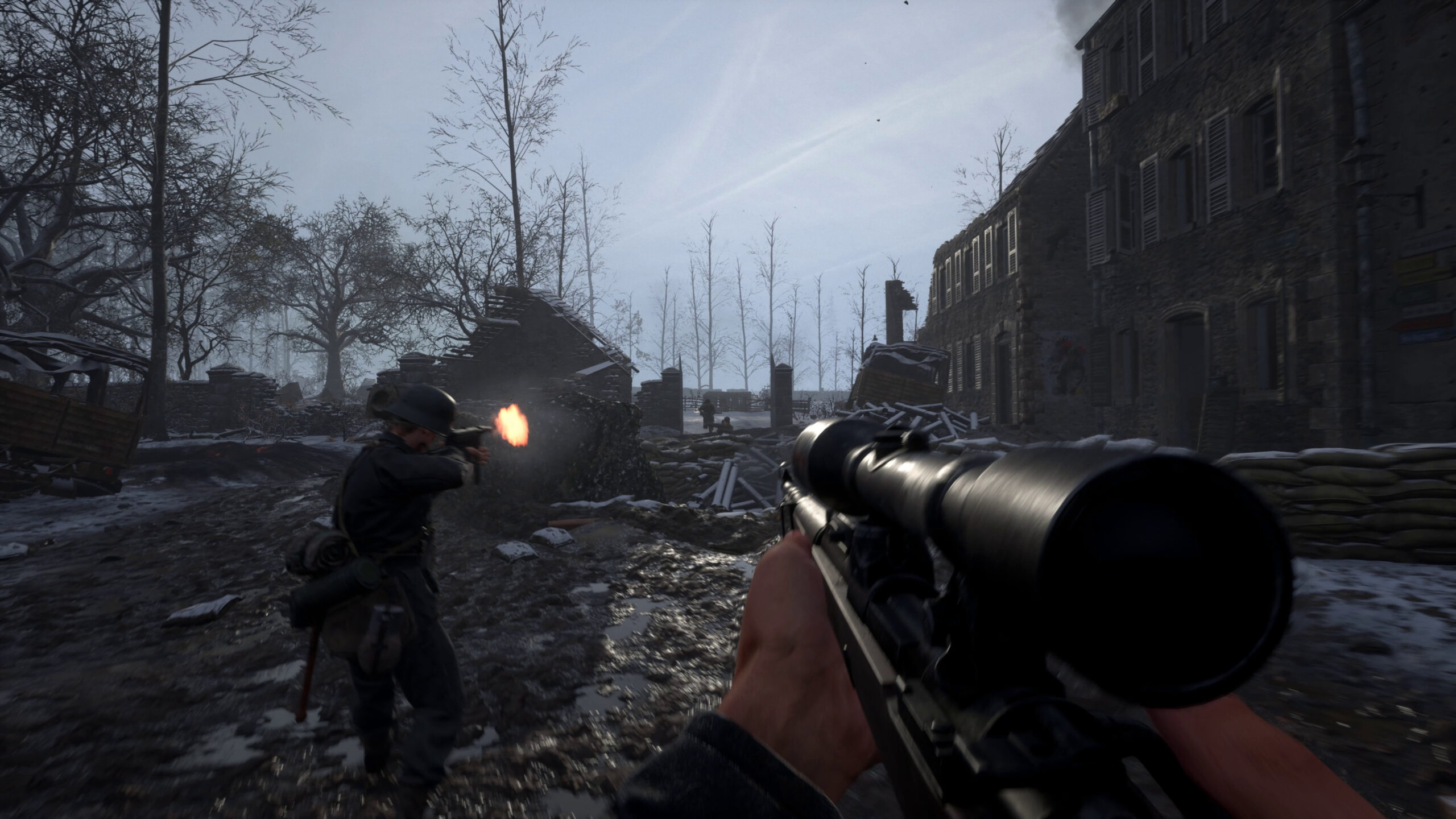
Join The Conversation
Comments
View All Comments